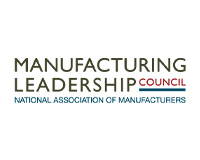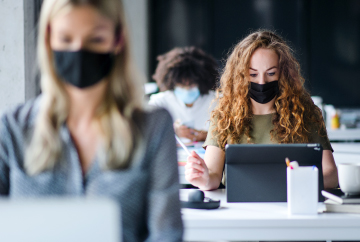This unfortunate event, however, turned Stewart into a crusader for transforming auto racing safety. Thanks to his persistent efforts, the world recognized the dangers that faced F1 drivers. It then took a slew of technology-led fixes and process changes to turn Formula One into a safer sport, including:
(i) Lowering car weights to 575 kgs
(ii) Reducing race distances to under 200 miles
(iii) Replacing aluminum with carbon fiber for car chassis
(iii) Prior medical tests and submissions for all racers
(iii) Frontal crash tests for all cars
(ii) Reducing race distances to under 200 miles
(iii) Replacing aluminum with carbon fiber for car chassis
(iii) Prior medical tests and submissions for all racers
(iii) Frontal crash tests for all cars
Since that time, F1 Racing managed to continue for almost 12 years without a single fatality. Even from the 80s until today, the world has seen only 11 additional F1 fatalities – a quarter of the deaths from the 1950s to the 1970s. Stewart’s accident was indeed a watershed safety moment for the F1 racing world.
From One Watershed to Another
Fast forward 55 years, and the world is in a somewhat similar situation. The safety issue now is workplace safety, not F1 tracks and drivers. COVID-19 has caused immense damage to life and business globally. As of Nov’20, we have globally recorded over a 1.5 million fatalities, and the global GDP growth rate is at the lowest since the 2008 crisis. The US monthly employment rate shot up to 14.7% in April ’20 from 4.4% in March’20. As businesses reopened, this rate has improved to 6.7% in Nov’20. Yet, there is continuing uncertainty for several industries that continue to perform below par.
In the last two decades, in fact, the world has seen five pandemics. In chronological order these include: the SARS outbreak (2002–04), the swine flu pandemic (2009), the MERS coronavirus outbreak (2012), the Zika virus epidemic (2015–16), and the COVID-19 pandemic.
The rate at which pandemics have broken out in the 21st century is alarming. Epidemics like these not only damage businesses but also put the lives of employees at risk. COVID-19 is a tragic example of the ruthless adversary the world is up against. Drawing parallels with F1, 2020 must now be our watershed moment to transform workplace safety and find sustainable ways of running businesses in pandemics.
Workplace Safety Underpins Return-to-Work
Supply chain shocks, financial constraints, and workplace safety issues are the primary reasons behind the recent shutdowns of plants and workplaces. The Supply chains and economic levers, however, are strategic and need significant interventions that span over a long-time horizon. But workplace safety is an area that organizations can, and should, immediately address to ensure the sustainability of their business operations.
In this COVID era, several incidents have prodded organizations to rethink how to improve workplace safety.
- This pandemic has cost Boeing $1.7 billion in total. $137 million of that comes from a shutdown that happened at one of its South Carolina plants!
- Ninety-seven employees were infected with COVID-19 in late June ’20 at a US-based aluminum extrusion company. Similarly, a greenhouse in Madison County witnessed 128 workers with COVID-19 infection.
- Auto manufacturers in the US continue to witness an increase in the number of COVID-19 cases. E.g., 20 cases recorded at a Ford plant.
- With schools reopening, Los Angeles schools have announced massive COVID-19 testing and tracing initiatives for its students and staff.
If there was ever a do-or-die time that could help speed up digital adoption for a safer workplace, it’s now. Organizations need use technology to build an effective return-to-work strategy and stay sustainable.
A four-step digital approach – Prevent, Avoid, Detect, and Respond to return-to-work – will help organizations combat the impact of COVID-19. Governments in many countries have already drafted return-to-work compliance regulations for many organizations. While these are incredibly detailed and well crafted, companies need to stop treating them as mere checklists or another tick in the box.
Strategies, Not Regulations, Are the Solution
When Jackie Stewart began his crusade for driver safety in the 60s and 70s in F1, some of the racing community felt his tirade detracted from the sport and escalated organizers’ costs.
As Stewart recalled: “I would have been a much more popular World Champion if I had always said what people wanted to hear. I might have been dead, but definitely more popular.”
Today, the novel coronavirus continues to challenge governments and health agencies across the globe. Unknown mutations, a lack of visibility around immunity periods, how the virus continues to spread, the list of concerns is endless. Government agency guidelines are certainly helping organizations address workplace safety, whether they are the OSHA guidelines in the U.S. or the Health Protection (Coronavirus) Regulations 2020 in the U.K.
But expecting stringent regulations and compliance measures alone to guide organizations forward is unfair. As part of industry’s broader responsibility, it’s time for companies themselves to forge a way ahead and proactively build safety nets to combat the viral menace.
There will be challenges, both financial and operational, that will discourage companies from adopting new technologies and processes. Even Jackie Stewart faced a lot of resistance and derision as he advocated for driver safety in F1. But organizations must find a way to navigate these challenges to prepare themselves for the long haul. If they don’t act now, they are making themselves vulnerable to future pandemics.



